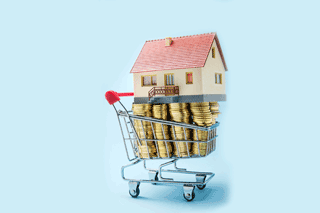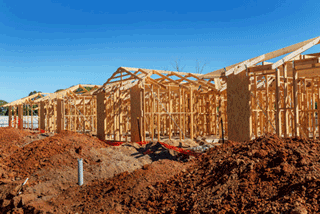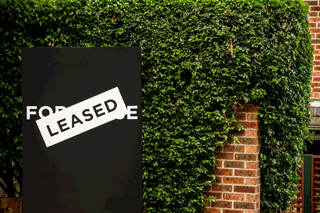Quote of the Week
“The pain is definitely going to be there for tenants. We’re likely to see rents move higher, particularly when looking to rental markets that have seen vast adjustment over the year.”
Domain senior research analyst Nicola Powell
Investor Loans Up In April
 The average mortgage size has risen 7% over the year to a record $563,550. This comes as the ABS reports new lending for housing rose 3.7% in April to a record high of $31 billion.
The average mortgage size has risen 7% over the year to a record $563,550. This comes as the ABS reports new lending for housing rose 3.7% in April to a record high of $31 billion.
Property investors are now outpacing first-home buyers. The value of new loans for investor housing rose 2.1% to $8.1 billion in April, the highest level since mid-2017. At the same time, new first-home-buyer commitments fell 1.9% to a monthly total of $6.7 billion.
The end of the HomeBuilder scheme in late March again weighed on the value of loans for construction, which fell 11.4% in April to $3.21 billion. Housing Industry Association economist Angela Lillicrap says it’s the first ABS data to show the nation is past the peak in the surge in construction due to HomeBuilder.
BIS Oxford Economics’ Tim Hibbert says while lending for new homes is expected to taper with the end of HomeBuilder, lending for existing properties is positioned for more growth.
Renovation loans rose 26.5% to a 17-year high of $403 million.
Credit Rating Boosts Economy
 The Federal Government and commercial banks will be able to keep borrowing cheaply in international credit markets, after S&P Global Ratings revised the government’s AAA rating to “stable” and removed it from a potential downgrade list.
The Federal Government and commercial banks will be able to keep borrowing cheaply in international credit markets, after S&P Global Ratings revised the government’s AAA rating to “stable” and removed it from a potential downgrade list.
The world’s biggest credit rating agency gave a vote of confidence to Australia’s “strong” economic rebound and suppression of the pandemic.
Australia is now one of only nine countries to hold a AAA credit rating from all three of the major rating agencies.
The S&P upgrade of Australia’s sovereign AAA rating to “stable” from “negative” provides an opportunity for the nation to emerge from the pandemic stronger than most.
After the sharpest economic contraction since the Great Depression, followed by the biggest fiscal expansion in the nation’s history, Australia is among the world’s most creditworthy nations.
Building Continues To Boom
 Home building remains at a cracking pace, although the sector could face challenges with pressure on the supply of tradies and materials. Housing Industry Association economist Tom Devitt expects such challenges will persist until the housing market slows towards the end of the year.
Home building remains at a cracking pace, although the sector could face challenges with pressure on the supply of tradies and materials. Housing Industry Association economist Tom Devitt expects such challenges will persist until the housing market slows towards the end of the year.
The Australian Industry Group/HIA performance of construction index eased 0.8 points, but at 58.3 in May it still indicates the industry is still in expansionary territory. Within that, house building stands at an index of 62.8.
“The volume of work continued to rise in May,” Devitt says. “The extension of the HomeBuilder deadlines will see new house building remaining elevated for longer.”
The Federal Government’s HomeBuilder grants program officially ended in March, but it has since extended the deadline to begin construction by 12 months.
Reserve Bank deputy governor Guy Debelle says the increased supply in housing can help to restrain house prices. Building approvals for detached housing hit another record in April.
97% Of Regions Are Growing
 A handful of neighbourhoods have missed Australia’s soaring house prices, with just 11 areas across the country recording price falls in recent months – most of them remote rural areas.
A handful of neighbourhoods have missed Australia’s soaring house prices, with just 11 areas across the country recording price falls in recent months – most of them remote rural areas.
Australia’s median property value jumped 7% over the past three months, the latest CoreLogic figures show, with the biggest gains seen in Sydney (9.3%), Darwin (7.9%) and Hobart (7.7%).
But price growth wasn’t limited to the cities, with an increase in property values recorded across 97% of the regions analysed by CoreLogic. Only 11 locations saw prices dip over the past three months – some of which recorded only a marginal fall after previous price rises.
CoreLogic’s Eliza Owen says it’s rare to see so many markets in a synchronised upswing. “The few markets that have seen a fall in dwelling values in the three months to May are in more remote locations across regional Australia,” she says. They include the West Pilbara region in WA and the Darling Downs and Maranoa region in Queensland.
Vacancy Rates Still Falling
 Renters in Australia’s biggest cities could find it hard to get a good deal with the number of empty properties falling, but some neighbourhoods still offer tenants more choice.
Renters in Australia’s biggest cities could find it hard to get a good deal with the number of empty properties falling, but some neighbourhoods still offer tenants more choice.
Fewer than two in every 100 rental properties (1.7%) nationwide are empty, the latest data from Domain shows, but vacancy rates are higher in Sydney and Melbourne.
Vacancy rates in all the capital cities fell or held steady last month, says Domain analyst Nicola Powell, with “extraordinarily tight” conditions in the smaller capitals making it harder for tenants to secure a good deal – and pushing the national vacancy rate to its lowest level since February 2020.
Vacancy rates in Brisbane (1.3%), Adelaide (0.6%) and Darwin (0.5%) are at their lowest level since the Domain data series began in 2017, while Canberra and Perth – both at 0.8% – are close to multi-year lows.
Tenants in Melbourne and Sydney have greater choice when it comes to finding a rental, with 3.8% and 2.7% of properties left vacant in May.




